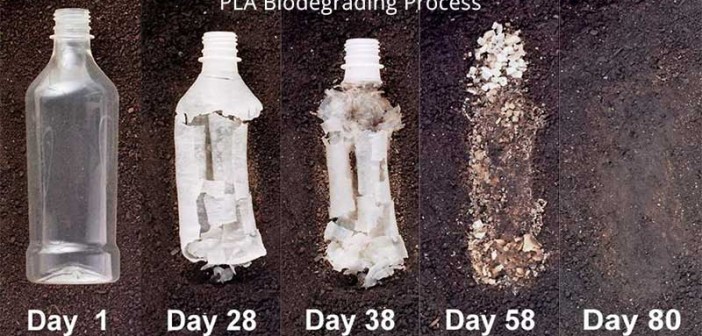When it comes to 3D printing, there are two options of plastics generally available today – ABS and PLA. Between these two plastics there are a lot of differences to consider based on the qualities you desire out of your final product. Both are going to require some knowledge of heating the plastic and using the proper surface area for 3D printing.
Here we focus on the characteristics of PLA and some of the reasons you may choose it for your 3D printer over ABS.
PLA Biodegradable 3D Printing Filament
The advancement of biodegradable technologies has led to an increase in highly functional, bio-degradable plastics that are being used everywhere from restaurants to operating rooms. The plastics are made from renewable natural resources like corn starch or sugar cane – versus being derived from fossil fuels.

This makes them kinder to the environment both as they are created and after they are disposed of since they will breakdown over time naturally and in active commercial compost piles.
PLA is one of these highly efficient biodegradable plastics. Polylactic Acid, or PLA, is a thermoplastic. It is the same plastic that is used in the biodegradable plastic cup with the green band around it that you get at a restaurant or the plastic container of strawberries you pick up at the grocery store.
PLA Is Everywhere

PLA has been used as anchors, screws, pins, mesh and more in medical implants as it breaks down overtime, successfully transferring the load of the implant to the body gradually.
The temperature qualities of PLA make it a great option for use in 3D printing. PLA liquefies as it is heated and creates a usable plastic filament for the 3D printer that has a sweet cooking-oil smell instead of the burning plastic smell you would find in a fossil fuel based plastic.
PLA Efficient 3D Printing
PLA is a rigid liquid meaning it transforms directly from solid to liquid. In its heated, fully liquid form PLA can potentially create a more detailed final product than is available with other filaments that would retain more thickness in their heated states.

As the 3D printer utilizes the liquid PLA filament, the heated, moldable plastic responds accurately to the needs of the design and has less of a chance of cracking or curling then other filaments.
The fan on the 3D printer can quickly cool the PLA filament and set the shape which decreases the chance of warping. As the PLA filament cools it returns to a strong and usable solid.
Because of the liquidity of the PLA when heated, it can also create stronger binding when cooled properly and create a stronger final product.

For many, the use of PLA filament over other options is due to its adaptability to a project. The PLA starts off clear and can be colored to any translucency and finishes with a glossy shine.
PLA has been shown to print at a higher speed then other options, have lower layer heights and create sharper printed details.
Combine these customizations with the low warping of the final product, and it is a great choice for small home projects, hobbies and educational uses.




